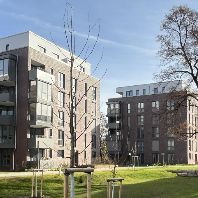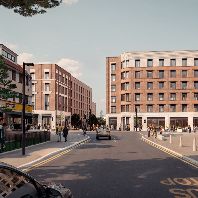JLL has published its latest UK ‘Big Box’ Industrial and Logistics market report. Commenting on the findings, Richard Evans, director UK logistics & industrial at JLL said; “Occupier demand in the second half of 2015 was marginally up on the first half of the year; however, overall take-up in 2015 was down on 2014. Grade-A availability rose over the course of 2015 following a pick-up in speculative development. Retailers were the most active source of demand in 2015. Further rental growth is expected this year and the investment market remains strong.”
JLL’s research also highlights that occupier take-up of grade-A industrial and logistics floorspace totalled 8.6 million ft² (800,000m²) in the H2 2015, marginally up on H1 2015 (+1%) but 35% lower than H2 2014. In total, 17.2 million ft² (1.6 million m²) was taken up in 2015, 12% down on 2014 (19.5 million ft²/1.8 million m²) which had been the highest annual level since 2010. Despite a slowdown in demand in 2015 compared with 2014, the level of take-up recorded last year was still 8% up on the annual average level of the past five years, 2011-2015 (15.8 million ft²/1.5 million m²).
In terms of sectors, retailers accounted for the largest share of floorspace taken up in 2015 (46%). Logistics companies were responsible for 30% of the total and manufacturers accounted for 15%. ‘Other’ companies recorded 9% of total take-up last year.
Over the course of 2015 further speculative development took place bringing much needed supply to the market which resulted in an overall increase in grade-A supply. However, despite the pick-up in development, the availability of new supply remained well below (68% lower) the level it had reached before the recession. The overall level of availability represented a national vacancy rate of around 6% compared with our estimate of the total grade-A stock.
Compared with the average level of take-up over the last five years (2011-2015), available grade-A supply at the end of 2015 represented less than one year’s worth of demand. Coupled with a vacancy rate of just 6% this suggests that the market is still balanced in favour of investors and developers rather than occupiers.
At the end of December 2015, there were 32 big box units speculatively under construction nationally totalling 6.5 million ft² (600,000m²), of which one has been pre-let during construction. At the end of 2015, JLL estimates that the development pipeline of big box schemes that could be speculatively developed over the next 12 to 24 months totalled approximately 8.3 million ft² (771,000m²) nationally.
Jon Sleeman, director UK logistics & industrial research, added; “We expect overall occupier activity across the big box sector in 2016 to be broadly the same as 2015 as the UK economy is expected to grow at roughly the same rate and business confidence should be relatively stable. The growth of online retail will continue to be a key driver of demand across a range of facilities, sizes and location. We expect to see a further increase in speculative development activity this year. Around 3.6 million ft² (334,000m²) of new speculative space was delivered to the market in 2015. In 2016, this level will approximately double, based on what is under construction now and our tracking of the development pipeline. But relatively limited supply will continue to drive rental growth over the year. We believe that growing online sales and a wider move to more same day or next day delivery will drive demand for more parcel/postal facilities and local distribution depots in major cities. Labour availability will become a critical success factor for industrial occupiers, developers and investors.”
The full report is available for download here.















